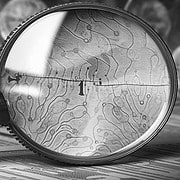Folds and wrinkles, the subtle manifestations of skin morphology, offer an extraordinary range of unique identification features. They serve as precise reference points between the identifying model and the subject to be identified. The complexity and individuality of these features allow for remarkable precision in identification.
Corpse stains, also known as livores, form a complex mosaic of discolorations that has left the forensic world in awe for centuries. These postmortem markings, which occur as blood accumulates in the lowest parts of the body after death, offer a treasure trove of information invaluable for determining the time of death and conducting extensive forensic investigations. But what exactly lies behind these enigmatic stains that appear like silent witnesses after a person’s passing?
Cognitive bias in forensic science is not an abstract concept, but a creeping virus that, in the worst cases, can infect entire justice systems. To make the workings of this insidious phenomenon more tangible, let’s look at some examples that clearly illustrate the potential impact of cognitive distortions in practice.
The identification of individuals in video recordings by forensic experts relies on a highly precise and detailed analysis of body structure and movement patterns. By closely examining these unique biometric features, accurate identification becomes possible. This advanced method adds a crucial dimension to forensic science and is becoming increasingly important in a world characterized by growing video surveillance and digital networks. The ability to identify individuals based on their distinctive biometric traits enables forensic experts to uncover criminal activities and accurately pinpoint perpetrators. This highly specialized approach demonstrates how advanced and forward-thinking modern forensic science is today.
When I received the order in May 2019 to review the infamous #IbizaVideo, I could hardly have imagined that this would be the start of one of Europe’s greatest political scandals. I am George A. Rauscher, a forensic expert. When Süddeutsche Zeitung and Der Spiegel approached me, I knew immediately that this task would be anything but ordinary.
The investigation of perpetrators through DNA analysis has established itself as an indispensable method in modern criminology. A sensational case from the early 2000s exemplifies the significance of this procedure impressively: a serial killer in South Louisiana could only be apprehended through the analysis of his DNA. Until that point, the FBI’s search focused on a white man who was supposedly driving a white pickup truck, at least according to eyewitness reports. However, the DNA analysis brought about a groundbreaking turn: it not only enabled the identification of genetic matches or familial connections but also determined the ethnic origin of the perpetrator. This realization led to the conclusion that the perpetrator could be an African American or Afro-Caribbean, rendering all previous leads obsolete. It became clear why previous DNA analyses of the suspected phenotype had not been successful and why the killer could continue to murder.





